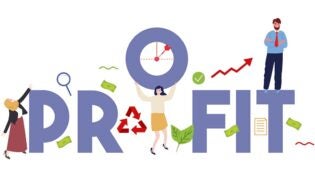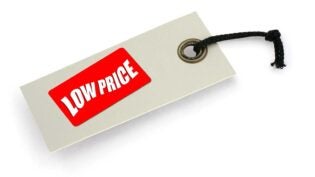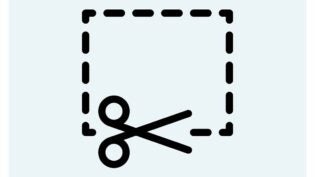A Valuable Product Strategy You Might Not Have Considered
By: YEC

As business owners, we are always thinking about more: How can we find more clients? How can we give our clients more than our competitors do? And of course, how can we bring in more money?
One way to offer more is to bundle your offerings. But what if bundling doesn’t always make sense for everyone in your audience? What if they don’t want more for less? What if they want less — and are willing to pay a small premium for the convenience of less?
Long gone are the days of being forced to purchase a whole music album: With iTunes, you’re free to build your music collection one song at a time. Media companies let you forego subscriptions in lieu of per-article pricing. And massive open online courses make it possible for students to take single lessons without the commitment of a degree program.
I’ve been observing these industry changes throughout the past decade, both as an employee in product management for a Fortune 500 company, and as a strategic consultant helping organizations rethink their products. Today, as the owner of a business strategy company focused on product management, I advise my clients to consider bundling (and unbundling) strategies.
Read more on product management
Bundling can be a valuable part of product strategy, but it can limit your choices. By unbundling your products, you can give your audience what they want, while creating new revenue streams. Follow these five steps below to discover product unbundling opportunities for your business:
1. Inventory Your Offerings
Before you can break your offerings into bite-sized pieces, you need to have a firm grasp on your inventory. You might already have a tidy list of all of your offerings, or you can pull one from your e-commerce site. If things are a bit more murky, you might need to sit down with your team and talk through everything you own and sell. During this step, don’t worry about decoupling: Just focus on documenting what you have.
2. Consider Your Audience
Next, carefully consider your audience’s needs. Why do they buy from you? What pain points are you helping them solve? If you haven’t already done the research to confidently know the answers to these questions, conduct a customer survey that helps you better understand your audience and their needs.
When I worked with a micropayment processor, we wanted to better understand consumer habits related to charitable donations — specifically micro-donations. After conducting market research and reviewing surveys on the topic, we found that men were more likely than women to be impulsive with micro-donations. By honing in on our target audience’s behaviors and motivations, we could create an unbundling strategy directed at the microprocessor’s target clients, non-profits, by incorporating micro-donations into non-profit business models with larger followings of men.
3. Evaluate Your Products for Individual Components
Exploring avenues for new revenue requires an examination of each of your products. How can you make a decoupled product available in a way that’s profitable for your business (and useful for your audience)? If you sell a physical good or service, think about how to break your product into smaller pieces. For example, a flatware manufacturer might be accustomed to selling sets of forks, knives and spoons — but some consumers might be looking to replace a single spoon.
While working with an online education company, our primary product was degree programs, but we had to think smaller — even smaller than individual courses. We asked ourselves: How can we break down a course to the smallest level? We started looking at learning objectives and divvied up the course materials in a way that aligned with each individual learning objective. For a digital marketing course, we could break it down to “identify the top social media platforms,” “create a social media marketing plan,” and “create a social media calendar.”
Not only were we able to bundle and unbundle the course materials, but we could actually look at different types of learners, such as auditory versus visual. By breaking the course offerings down to such a finite level, we created a customized educational experience equipped with new products to sell.
4. Determine Pricing
Once you have determined individual components to sell, strategize the price points that make the most sense based on your current bundled pricing and your audience’s perceived value.
Make sure that the bundled offering still provides a price break, but doesn’t underestimate the value of the decoupled products. If the most valuable piece of content in your e-book is a template, for example, don’t be afraid to make that template worth half the cost of the entire ebook.
To start the pricing process, I typically evaluate the current pricing model, the production time required, and the product’s perceived value. I also advise A/B testing to see how the market responds, and then adjust pricing accordingly.
5. Analyze and Experiment
After you announce your new products and pricing, it’s important to continuously monitor your market. What are they buying? What bundles remain big sellers? Which ones are no longer selling?
As you introduce new offerings to your audience, continue to experiment with bundled versus unbundled products. The market and your audience’s needs are always changing. Your ability to provide what the market demands relies on the effectiveness of your ongoing research and product strategy. Remaining static is not an option.
When I launched a community for “parentpreneurs,” I saw a need for family-friendly business events and conferences. After holding one in July, I have continued to be aware of the market. If someone launches a similar event, I can tweak my offering to remain competitive.
Not ready to unbundle your current offerings? You can still plan for future products. When you’re creating a new offering, be sure to design a product infrastructure that will ultimately allow you to sell products in a variety of ways later. By unbundling your product offerings, you have an opportunity to better serve your audience and create a viable stream of revenue for your business. It doesn’t get much better than that.
Author: Amber Anderson is the founder & CEO of MORE, a community that helps you scale your business without sacrificing time with your family.












